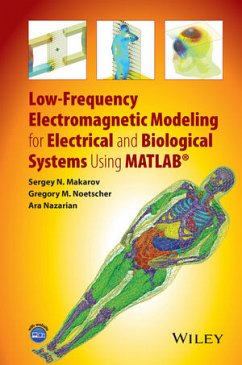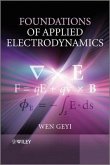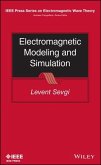Provides a detailed and systematic description of the Method of Moments (Boundary Element Method) for electromagnetic modeling at low frequencies and includes hands-on, application-based MATLAB¯ modules with user-friendly and intuitive GUI and a highly visualized interactive output. Includes a full-body computational human phantom with over 120 triangular surface meshes extracted from the Visible Human Project¯ Female dataset of the National library of Medicine and fully compatible with MATLAB¯ and major commercial FEM/BEM electromagnetic software simulators. This book covers the basic concepts of computational low-frequency electromagnetics in an application-based format and hones the knowledge of these concepts with hands-on MATLAB¯ modules. The book is divided into five parts. Part 1 discusses low-frequency electromagnetics, basic theory of triangular surface mesh generation, and computational human phantoms. Part 2 covers electrostatics of conductors and dielectrics, and direct current flow. Linear magnetostatics is analyzed in Part 3. Part 4 examines theory and applications of eddy currents. Finally, Part 5 evaluates nonlinear electrostatics. Application examples included in this book cover all major subjects of low-frequency electromagnetic theory. In addition, this book includes complete or summarized analytical solutions to a large number of quasi-static electromagnetic problems. Each Chapter concludes with a summary of the corresponding MATLAB¯ modules. * Combines fundamental electromagnetic theory and application-oriented computation algorithms in the form of stand alone MATLAB¯ modules * Makes use of the three-dimensional Method of Moments (MoM) for static and quasistatic electromagnetic problems * Contains a detailed full-body computational human phantom from the Visible Human Project¯ Female, embedded implant models, and a collection of homogeneous human shells Low-Frequency Electromagnetic Modeling for Electrical and Biological Systems Using MATLAB¯ is a resource for electrical and biomedical engineering students and practicing researchers, engineers, and medical doctors working on low-frequency modeling and bioelectromagnetic applications.
Dieser Download kann aus rechtlichen Gründen nur mit Rechnungsadresse in A, B, BG, CY, CZ, D, DK, EW, E, FIN, F, GR, HR, H, IRL, I, LT, L, LR, M, NL, PL, P, R, S, SLO, SK ausgeliefert werden.









